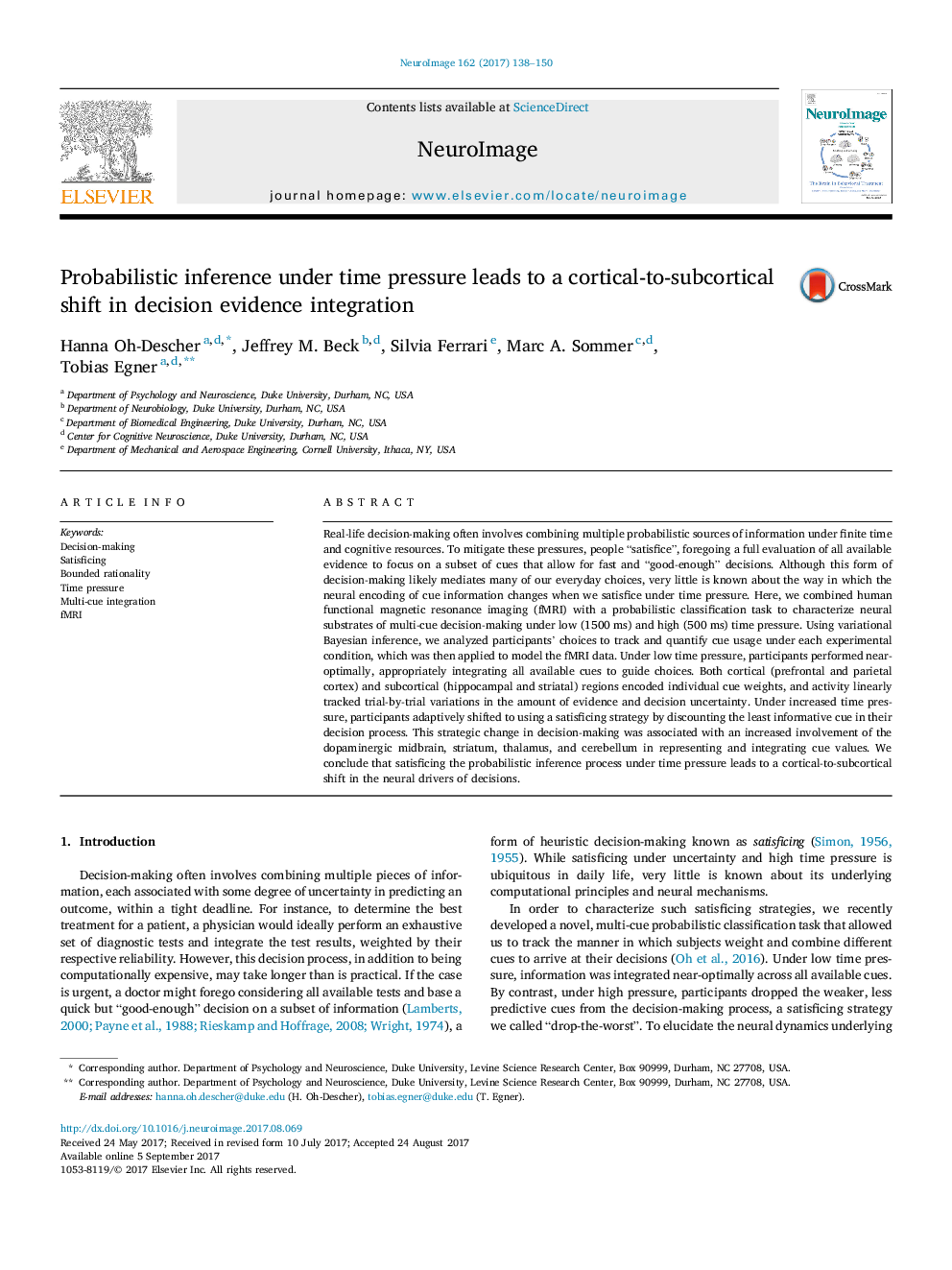| کد مقاله | کد نشریه | سال انتشار | مقاله انگلیسی | نسخه تمام متن |
|---|---|---|---|---|
| 5630759 | 1580848 | 2017 | 13 صفحه PDF | دانلود رایگان |

- We probed neural substrates of multi-cue decision-making under time pressure.
- High time pressure results in a “drop-the-worst” cue satisficing strategy.
- Both cortical and subcortical regions encoded decision evidence under low pressure.
- Increased pressure led to a cortical-to-subcortical shift in evidence integration.
Real-life decision-making often involves combining multiple probabilistic sources of information under finite time and cognitive resources. To mitigate these pressures, people “satisfice”, foregoing a full evaluation of all available evidence to focus on a subset of cues that allow for fast and “good-enough” decisions. Although this form of decision-making likely mediates many of our everyday choices, very little is known about the way in which the neural encoding of cue information changes when we satisfice under time pressure. Here, we combined human functional magnetic resonance imaging (fMRI) with a probabilistic classification task to characterize neural substrates of multi-cue decision-making under low (1500Â ms) and high (500Â ms) time pressure. Using variational Bayesian inference, we analyzed participants' choices to track and quantify cue usage under each experimental condition, which was then applied to model the fMRI data. Under low time pressure, participants performed near-optimally, appropriately integrating all available cues to guide choices. Both cortical (prefrontal and parietal cortex) and subcortical (hippocampal and striatal) regions encoded individual cue weights, and activity linearly tracked trial-by-trial variations in the amount of evidence and decision uncertainty. Under increased time pressure, participants adaptively shifted to using a satisficing strategy by discounting the least informative cue in their decision process. This strategic change in decision-making was associated with an increased involvement of the dopaminergic midbrain, striatum, thalamus, and cerebellum in representing and integrating cue values. We conclude that satisficing the probabilistic inference process under time pressure leads to a cortical-to-subcortical shift in the neural drivers of decisions.
Journal: NeuroImage - Volume 162, 15 November 2017, Pages 138-150